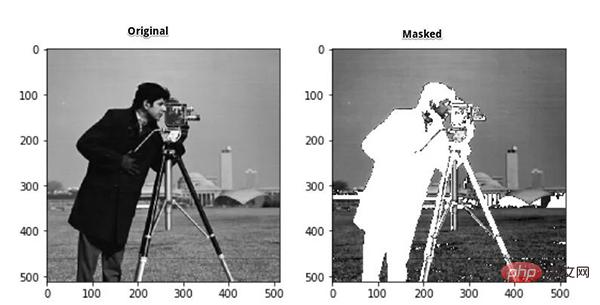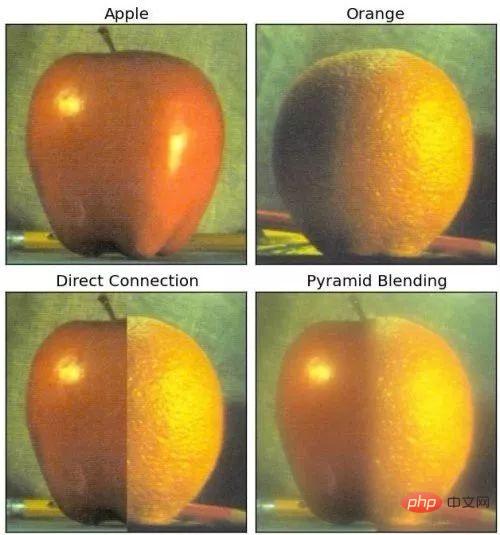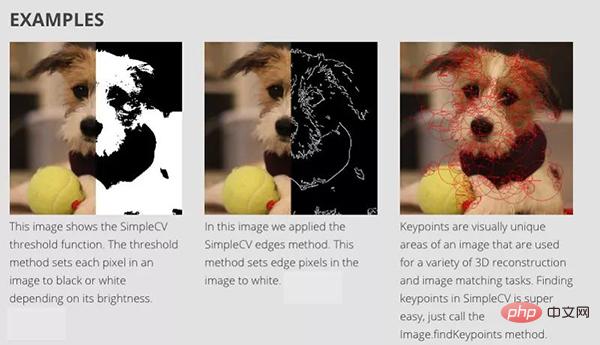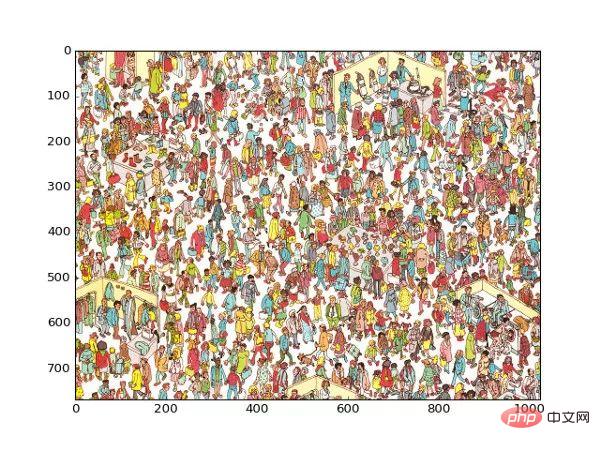Top 10 Image Processing Tools in Python

Today’s world is full of all kinds of data, and images are a highly important part of it. However, for it to be useful, we need to process these images. Image processing is the process of analyzing and manipulating digital images with the aim of improving their quality or extracting some information from them and then using them in some way.
Common tasks in image processing include displaying images, basic operations (such as cropping, flipping, rotating, etc.), image segmentation, classification and feature extraction, image restoration and image recognition, etc. Python is the best choice for image processing tasks because of the growing popularity of this scientific programming language and its free availability of many state-of-the-art image processing tools.
Let’s take a look at some common Python libraries used for image processing tasks.
1. scikit Image
scikit-image is an open source Python package based on numpy arrays. It implements algorithms and utilities for research, education, and industrial applications. It's a fairly simple library even for those new to Python. The library's code is of very high quality and has been peer-reviewed, written by an active community of volunteers.
Usage examples: image filtering, template matching.
You can use "skimage" to import this library. Most functionality can be found in submodules.
import matplotlib.pyplot as plt %matplotlib inline from skimage import data,filters image = data.coins() # ... or any other NumPy array! edges = filters.sobel(image) plt.imshow(edges, cmap='gray')

Template matching (using match_template function)

2, Numpy
Numpy is one of the core libraries for Python programming and supports array structures. Images are essentially standard Numpy arrays containing pixels of data points. Therefore, the pixel values of an image can be modified by using basic NumPy operations - such as slicing, masking, and fancy indexing. Images can be loaded using skimage and displayed using matplotlib.
Usage example: Use Numpy to desensitize images:
import numpy as np from skimage import data import matplotlib.pyplot as plt %matplotlib inline image = data.camera() type(image) numpy.ndarray #Image is a numpy array mask = image < 87 image[mask]=255 plt.imshow(image, cmap='gray')

3, Scipy
scipy is Python Another core scientific module, like Numpy, can be used for basic image processing and processing tasks. It is worth mentioning that the submodule scipy.ndimage provides functions that operate on n-dimensional NumPy arrays. The package currently includes features such as linear and nonlinear filtering, binary morphology, B-spline interpolation, and object measurements.
Usage example: Use SciPy's Gaussian filter to blur the image:
from scipy import misc,ndimage face = misc.face() blurred_face = ndimage.gaussian_filter(face, sigma=3) very_blurred = ndimage.gaussian_filter(face, sigma=5) #Results plt.imshow(<image to be displayed>)

4, PIL/ Pillow
PIL (Python Imaging Library) is a free Python programming language library that adds support for opening, processing, and saving many different image file formats. However, its development has stalled and its last update was in 2009. Fortunately, PIL has a fork under active development called Pillow, which is very easy to install. Pillow runs on all major operating systems and supports Python 3. The library contains basic image processing functions, including point operations, filtering using a set of built-in convolution kernels, and color space conversion.
Usage example: Use ImageFilter to enhance images in Pillow:
from PIL import Image, ImageFilter
#Read image
im = Image.open( 'image.jpg' )
#Display image
im.show()
from PIL import ImageEnhance
enh = ImageEnhance.Contrast(im)
enh.enhance(1.8).show("30% more contrast")
5, OpenCV-Python
OpenCV (open source Computer Vision Library (Open Source Computer Vision Library) is one of the most widely used libraries in computer vision applications. OpenCV-Python is the python API of OpenCV. OpenCV-Python is not only fast (because the backend consists of code written in C/C), but also easy to code and deploy (thanks to the Python wrapper on the frontend). This makes it an excellent choice for performing computationally intensive computer vision programs.
Usage example: Use Pyramids to create a new fruit named 'Orapple' function

6. SimpleCV
SimpleCV is also an open source framework for building computer vision applications. It provides access to high-performance computer vision libraries such as OpenCV without having to first understand bit depth, file formats, or color spaces. It's much easier to learn than OpenCV, and as their tagline says, "It makes computer vision easy." Some points in favor of SimpleCV are:
- Even a beginner can write simple machine vision tests
- Cameras, video files, images and video streams are all Can be operated interactively
Usage examples

7, Mahotas
Mahotas is another Computer vision and image processing library for Python. It contains traditional image processing functions (such as filtering and morphological operations) as well as more modern computer vision functions for feature calculation (including interest point detection and local descriptors). The interface is in Python, suitable for rapid development, but the algorithms are implemented in C and optimized for speed. The Mahotas library is fast, its code is simple, and its dependencies (on other libraries) are minimal. It is recommended to read their official documentation to learn more.
Usage Example
The Mahotas library uses simple code to get the job done. For the "Finding Wally" problem, Mahotas did a great job with a very small amount of code.


8、SimpleITK
ITK (Insight Segmentation and Registration Toolkit) is an open source cross-platform system that provides developers with A comprehensive set of software tools for image analysis. Among them, SimpleITK is a simplified layer built on top of ITK, aiming to promote its use in rapid prototyping, education, and scripting languages. SimpleITK is an image analysis toolkit with a large number of components supporting general filtering operations, image segmentation and registration. SimpleITK itself is written in C, but is available for a large number of programming languages, including Python.
There are a number of Jupyter notebooks illustrating how to use SimpleITK for educational and research activities. The notebook demonstrates how to use SimpleITK for interactive image analysis using the Python and R programming languages.
Usage Example
The animation below is a visualization of the rigorous CT/MR registration process created using SimpleITK and Python.

9. pgmagick
pgmagick is a Python-based wrapper for the GraphicsMagick library. The GraphicsMagick image processing system is sometimes called the Swiss Army Knife of image processing. It provides a powerful and efficient collection of tools and libraries that supports the reading, writing and manipulation of images in more than 88 major formats, including important formats such as DPX, GIF, JPEG, JPEG-2000, PNG, PDF, PNM and TIFF.
Usage examples: image scaling, edge extraction

Image scaling


The above is the detailed content of Top 10 Image Processing Tools in Python. For more information, please follow other related articles on the PHP Chinese website!

Hot AI Tools

Undresser.AI Undress
AI-powered app for creating realistic nude photos

AI Clothes Remover
Online AI tool for removing clothes from photos.

Undress AI Tool
Undress images for free

Clothoff.io
AI clothes remover

Video Face Swap
Swap faces in any video effortlessly with our completely free AI face swap tool!

Hot Article

Hot Tools

Notepad++7.3.1
Easy-to-use and free code editor

SublimeText3 Chinese version
Chinese version, very easy to use

Zend Studio 13.0.1
Powerful PHP integrated development environment

Dreamweaver CS6
Visual web development tools

SublimeText3 Mac version
God-level code editing software (SublimeText3)

Hot Topics
 PHP and Python: Different Paradigms Explained
Apr 18, 2025 am 12:26 AM
PHP and Python: Different Paradigms Explained
Apr 18, 2025 am 12:26 AM
PHP is mainly procedural programming, but also supports object-oriented programming (OOP); Python supports a variety of paradigms, including OOP, functional and procedural programming. PHP is suitable for web development, and Python is suitable for a variety of applications such as data analysis and machine learning.
 Choosing Between PHP and Python: A Guide
Apr 18, 2025 am 12:24 AM
Choosing Between PHP and Python: A Guide
Apr 18, 2025 am 12:24 AM
PHP is suitable for web development and rapid prototyping, and Python is suitable for data science and machine learning. 1.PHP is used for dynamic web development, with simple syntax and suitable for rapid development. 2. Python has concise syntax, is suitable for multiple fields, and has a strong library ecosystem.
 Python vs. JavaScript: The Learning Curve and Ease of Use
Apr 16, 2025 am 12:12 AM
Python vs. JavaScript: The Learning Curve and Ease of Use
Apr 16, 2025 am 12:12 AM
Python is more suitable for beginners, with a smooth learning curve and concise syntax; JavaScript is suitable for front-end development, with a steep learning curve and flexible syntax. 1. Python syntax is intuitive and suitable for data science and back-end development. 2. JavaScript is flexible and widely used in front-end and server-side programming.
 PHP and Python: A Deep Dive into Their History
Apr 18, 2025 am 12:25 AM
PHP and Python: A Deep Dive into Their History
Apr 18, 2025 am 12:25 AM
PHP originated in 1994 and was developed by RasmusLerdorf. It was originally used to track website visitors and gradually evolved into a server-side scripting language and was widely used in web development. Python was developed by Guidovan Rossum in the late 1980s and was first released in 1991. It emphasizes code readability and simplicity, and is suitable for scientific computing, data analysis and other fields.
 Advanced Photoshop Tutorial: Master Retouching & Compositing
Apr 17, 2025 am 12:10 AM
Advanced Photoshop Tutorial: Master Retouching & Compositing
Apr 17, 2025 am 12:10 AM
Photoshop's advanced photo editing and synthesis technologies include: 1. Use layers, masks and adjustment layers for basic operations; 2. Use image pixel values to achieve photo editing effects; 3. Use multiple layers and masks for complex synthesis; 4. Use "liquefaction" tools to adjust facial features; 5. Use "frequency separation" technology to perform delicate photo editing, these technologies can improve image processing level and achieve professional-level effects.
 Can vs code run in Windows 8
Apr 15, 2025 pm 07:24 PM
Can vs code run in Windows 8
Apr 15, 2025 pm 07:24 PM
VS Code can run on Windows 8, but the experience may not be great. First make sure the system has been updated to the latest patch, then download the VS Code installation package that matches the system architecture and install it as prompted. After installation, be aware that some extensions may be incompatible with Windows 8 and need to look for alternative extensions or use newer Windows systems in a virtual machine. Install the necessary extensions to check whether they work properly. Although VS Code is feasible on Windows 8, it is recommended to upgrade to a newer Windows system for a better development experience and security.
 Can visual studio code be used in python
Apr 15, 2025 pm 08:18 PM
Can visual studio code be used in python
Apr 15, 2025 pm 08:18 PM
VS Code can be used to write Python and provides many features that make it an ideal tool for developing Python applications. It allows users to: install Python extensions to get functions such as code completion, syntax highlighting, and debugging. Use the debugger to track code step by step, find and fix errors. Integrate Git for version control. Use code formatting tools to maintain code consistency. Use the Linting tool to spot potential problems ahead of time.
 How to run python with notepad
Apr 16, 2025 pm 07:33 PM
How to run python with notepad
Apr 16, 2025 pm 07:33 PM
Running Python code in Notepad requires the Python executable and NppExec plug-in to be installed. After installing Python and adding PATH to it, configure the command "python" and the parameter "{CURRENT_DIRECTORY}{FILE_NAME}" in the NppExec plug-in to run Python code in Notepad through the shortcut key "F6".






